Snake plants are tough: they propagate easily, don’t need much water, and tolerate full sun and deep shade alike.
However, these awesome traits present a double-edged sword. It’s easy for species such as Dracaena trifasciata to spread in ideal conditions outdoors… too easy.
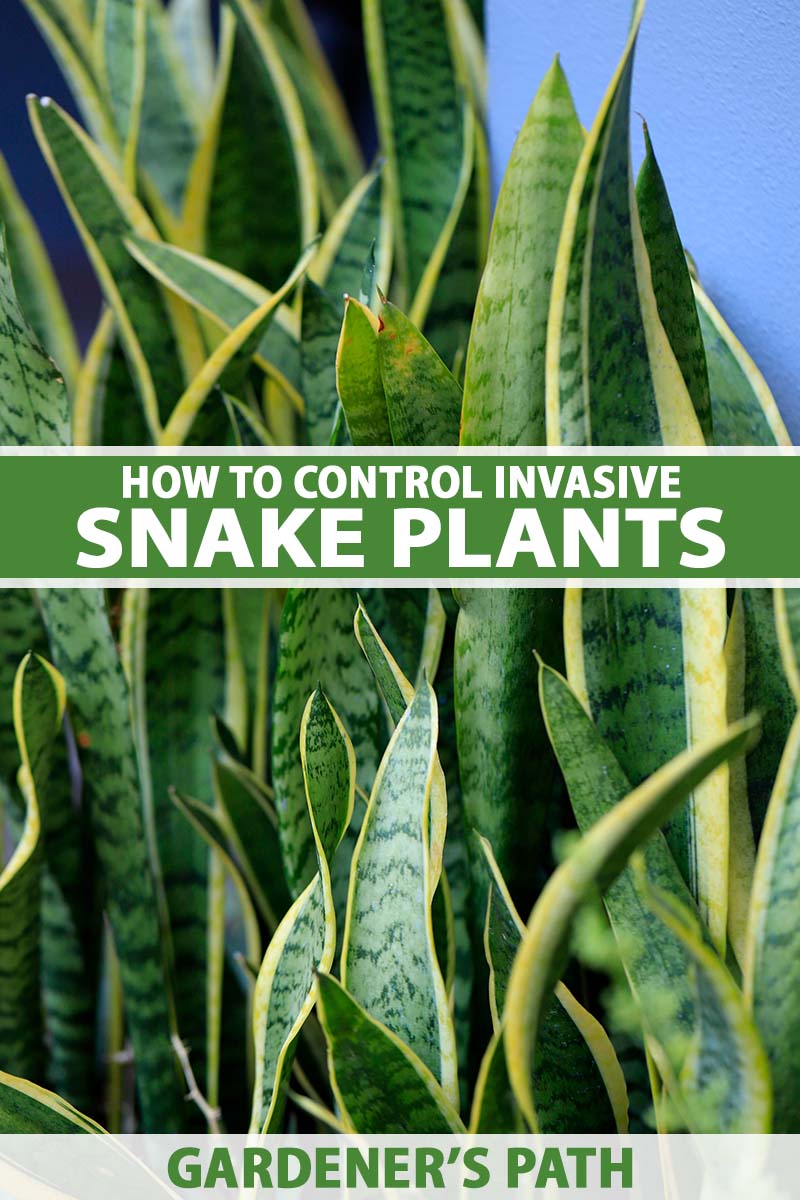
We link to vendors to help you find relevant products. If you buy from one of our links, we may earn a commission.
A snake plant doesn’t know or care where its designated space in your garden begins or ends – if it has the room and resources to expand, it will do so if planted in the ground in a suitable climate.
And while this spreading habit helps it to survive, it can throw a wrench into your landscape design plan.
Having an invasive species growing in your garden doesn’t do your other specimens any favors, either. Not to mention the potential effects it can have on the ecosystem at large.
This guide will help you manage any unwanted specimens in your landscape.
Necessary background info, control protocols, clear reasons to keep these guys under control – it’s all covered here.
Check out what’s to come:
What You’ll Learn
What Are Snake Plants?
Formerly honoring the Italian polymath and seventh Prince of San Severo, Raimondo di Sangro, all Sansevieria species were recently reclassified as members of the Dracaena genus alongside existing Dracaena species, such as D. draco and D. reflexa.
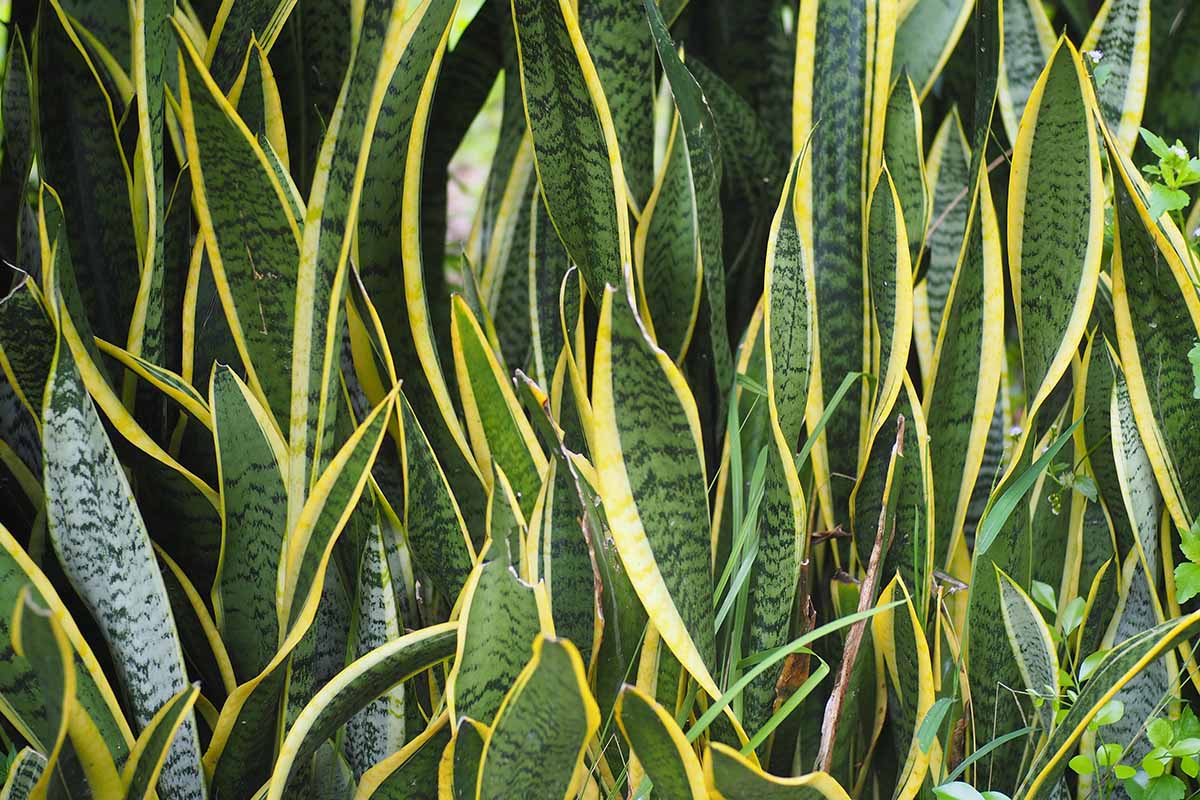
Though all species formerly classified as Sansevieria are known commonly as snake plants, all species of Dracaena are not.
And some of these are more likely to become invasive in home gardens than others.
Native to the tropics of western Africa and hardy to USDA Zones 9 to 12, these clumping evergreen perennials tolerate a wide range of growing conditions.
The keen adaptability of these species makes them fantastic additions to the garden when intentionally cultivated – or a real nuisance in ideal climates when they’re unwanted.
But given a choice, I’m sure snake plants would gladly take the hot, humid, and cramped conditions of the jungles that they call home.
Perhaps that’s why they grow aggressively in similarly warm, moist, and tightly-packed environments such as what you might find in certain parts of Florida and Australia… but I’m getting ahead of myself.
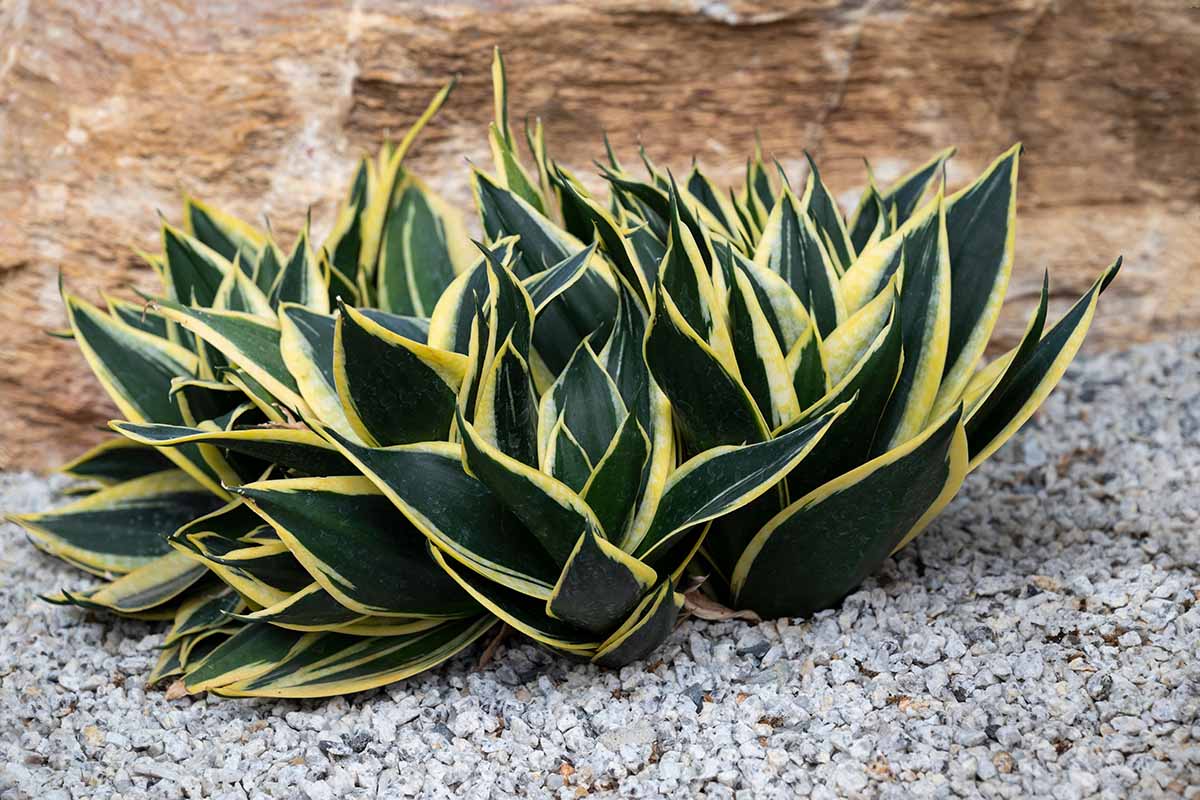
Snake plant species vary in size – D. stuckyi, for example, reaches up to 10 feet tall, while D. trifasciata ‘Hahnii’ usually doesn’t grow more than six inches tall.
In general, they flaunt evergreen succulent leaves that vary in shape, waviness, arrangement, and hue, although they usually don’t stray too far from a green color palette.
On occasion, snake plants produce wispy, aromatic flowers that are borne on upright racemes – especially in fertile, sunny, and root-bound conditions.
Though spread via sexual reproduction is typically rare, as these plants don’t often produce colorful seed-filled berries after the flowers are fertilized, rhizomatous spread is much more common.
The latter, asexual reproduction via clones that sprout from underground, is typically the target of gardeners who wish to eradicate invasive mother in law’s tongue from their gardens.
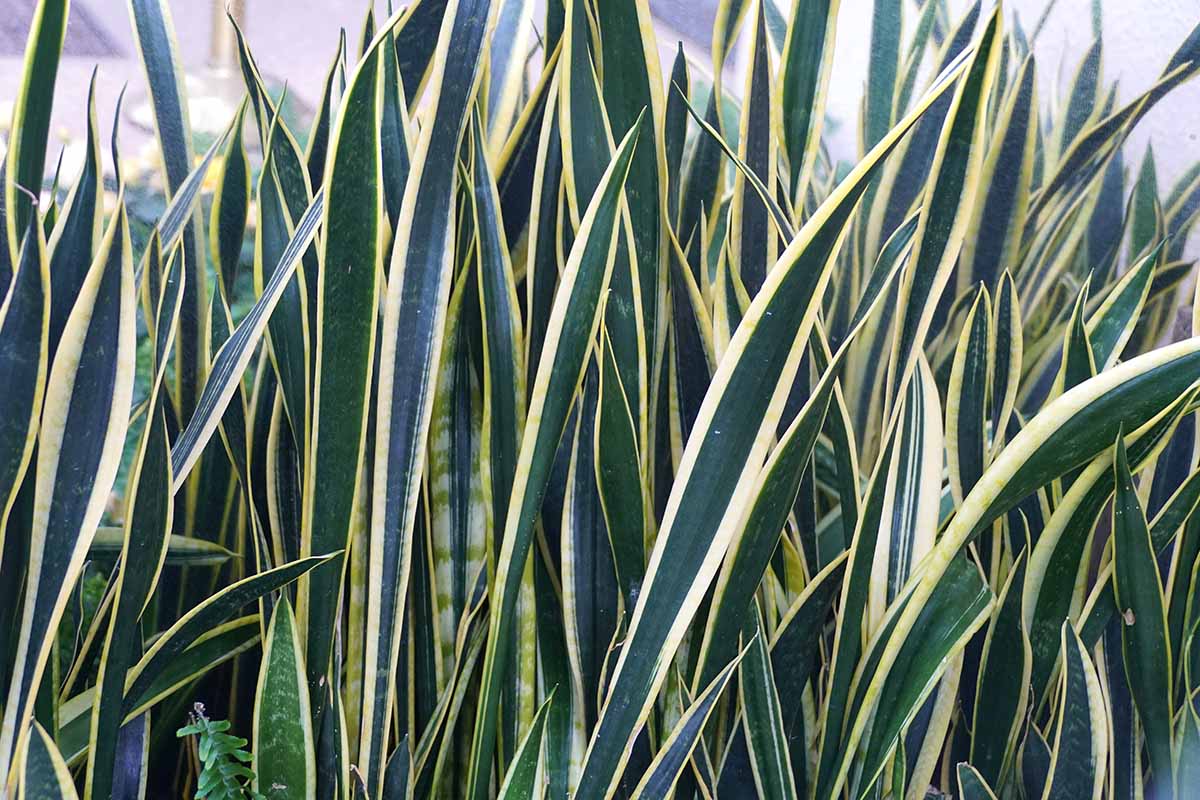
They also utilize crassulacean acid metabolism, a process whereby plants conserve water by only opening their stomata for gas exchange at night, another advantage that makes survival and spread all the more feasible in backyard gardens and beyond.
An awesome bunch of flora, am I right? Minus their potential for invasiveness when planted in the ground or allowed to go to seed, snake plants are pretty much perfect.
But what’s a gardener to do when they begin to overstep their bounds? Let’s take a look.
Just How Invasive Are They?
Mother-in-law’s tongue has the potential to grow invasively from USDA Hardiness Zones 9 to 12 in the US and in regions with comparable climates that they aren’t native to elsewhere.
Two places in particular that are known to suffer from unwelcome takeover are Australia and Florida, and ecologists there classify its invasiveness in different ways.

In the Land Down Under, D. trifasciata qualifies as an “environmental weed” in the Northern Territory, New South Wales, and Queensland, while the rest of Oz labels it a “sleeper weed.”
Both are alien to Australia, but environmental weeds are widespread and displace native species, while sleeper weeds do not yet pose a threat to local ecosystems.
In Florida, snake plants were introduced in 1800 for use in landscaping and hemp production, and later deemed a “nuisance” starting in 1951, thanks to their tendency to exclude desirable native vegetation. D. trifasciata and D. hyacinthoides are primarily problems in the lower half of the state.
Sanibel Island, off the western coast of Florida, also suffers from snake plant invasiveness.
Two-thirds of the island is protected conservation land, and effective management is mandated by local codes prohibiting the planting or transplanting of D. hyacinthoides and seven other species of invasive plants.
According to the Florida Invasive Species Council, D. hyacinthoides is classified as a Category II invasive, which means it has significantly increased in number from its pre-Category II state, but has not yet altered the ecological functions of, displaced, or hybridized with native species to the extent of Category I invasives.
For a more collegiate assessment, the University of Florida’s Institute of Food and Agricultural Sciences determined via their Assessment of Non-Native Plants in Florida’s Natural Areas that D. trifasciata has a “High Invasion Risk,” and its use is not recommended in north, central, or south Floridian landscapes.
Why Bother with Control?
Well, for starters, I’m willing to bet that all of you gardeners reading this would rather not disrupt the local ecosystem knowingly.
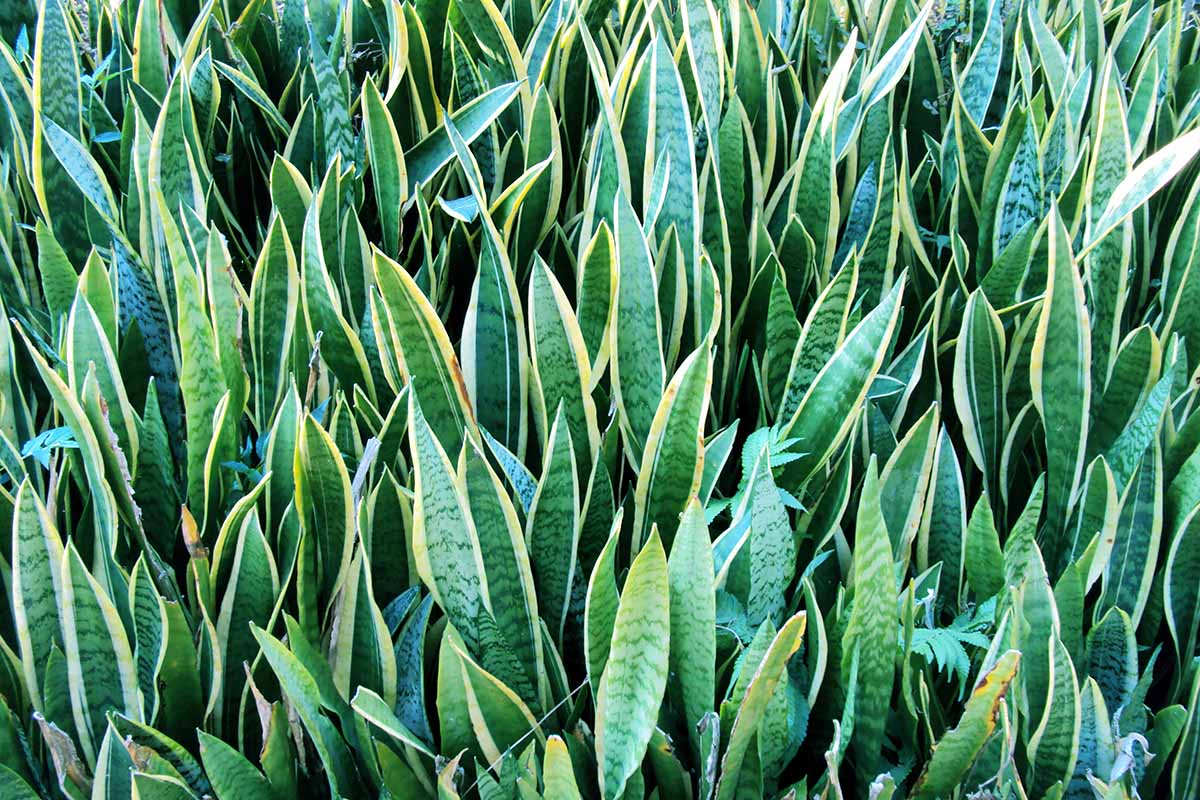
But even if there’s no chance of your snake plants spreading beyond your landscape into the surrounding environment, an unchecked spread within your own garden can result in a dense ground cover that will prevent the growth of other, more desirable plantings.
As a general rule, any specimen that you don’t wish to cultivate will hog space, water, and nutrients, keeping these resources from the ones that you do want to grow.
And while mother-in-law’s tongue isn’t all that thirsty, its large leaves will definitely block sunlight from reaching your smaller annuals and perennials.
Even in shaded environments where sunlight-hogging isn’t as much of an issue, a snake plant’s root system will still take up nutrients and real estate that could be going to your other garden specimens.
Speaking of root systems and soil spacing, root bindage in mother-in-law’s tongue actually spurs flowering, which potentially leads to even further spread via seeds.
Tips for Managing Invasive Snake Plants
Along with being worth a pound of cure, prevention will save you the hassle of later removal.
First and foremost, check your local laws and environmental regulations. If they say that you can’t grow these guys in your landscape, then don’t.
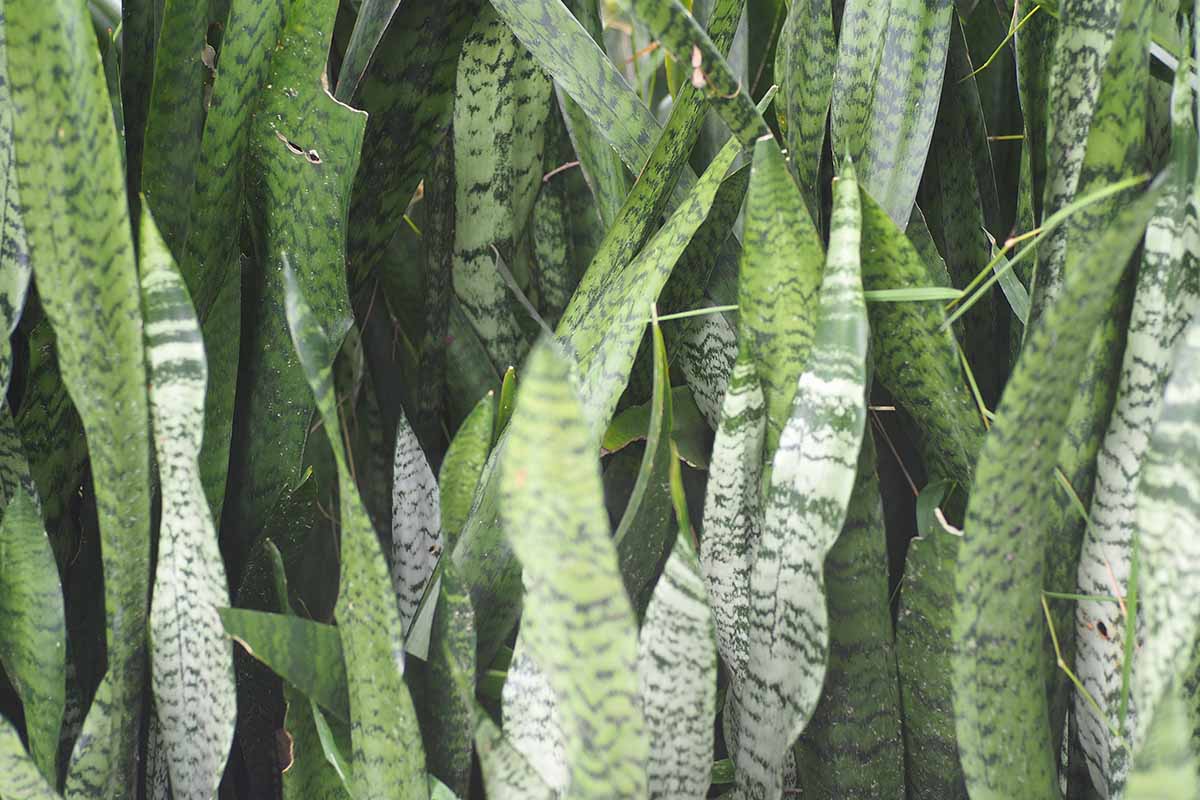
If you have the okay to grow them, then make sure to contain them within an enclosed area so that they can’t spread via their rhizomes.
Pots, planters, raised beds, or plots surrounded by walls, concrete, and/or walkways all count as enclosed planting spaces, so you have a ton of options!
Our guide to growing snake plants indoors covers the ins and outs of container cultivation.
But if you have any out-of-bounds specimens – or their designated zone is overcrowded with them – you’ll have to remove them to check their spread.
As the fictional snake venom expert Dr. Steven Price once said, “Make it fast. Time is tissue.” Venomous bites aren’t going to be a concern here, but unless you get to work quickly, those snakes are just going to keep on growing.
Due to the waxy coating of their leaves, chemical controls aren’t guaranteed.
But squelch your inner pyromaniac and skip the blowtorch. Your best bet is to physically remove snake plants from the ground via digging.
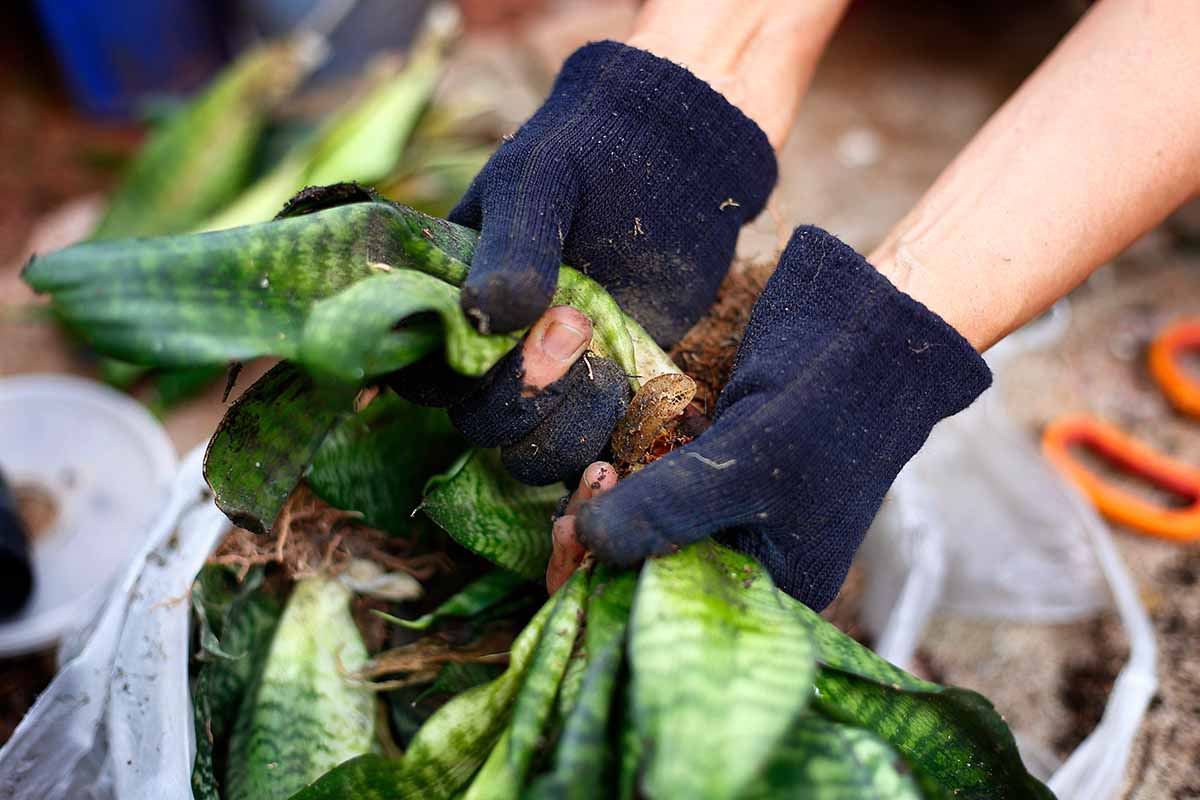
Dig down about two feet deep, and about a foot away from each snake plant, going around the perimeter.
Any severed rhizome fragments left in the soil can easily resprout to form a new mother-in-law’s tongue, so try to avoid damaging the root system as you dig. This may require switching out your bulky shovel for a small hand trowel as you get close to the root system.
Once the intended specimens have been lifted, check for and remove any rhizomes that may be stealthily lying in the soil.
Living vegetation can take root in organic refuse, so dispose of any removed specimens in the garbage if you don’t want them growing from your compost pile, or spreading into wild lands beyond cultivation in your own backyard.
If you don’t want any seeds to be spread by animals, deadhead flower stems before they give way to seed-bearing berries.
Tools used for any of the above procedures should be sterilized beforehand – you don’t want to spread disease!
After you remove the snake plants, you’ll end up with gaping holes in your garden where they used to be. You can either fill them with soil, or put new plantings in their place.
For the latter, I’d recommend warm tropical specimens native to your local area.
Elephant ears, birds of paradise, or canna lilies may be suitable. Solid companions for the snake plants you didn’t remove include colorful choices such as petunias, marigolds, and coleus.
Unwanted specimens that have self-propagated around your garden can also be divided and potted up. See our snake plant propagation guide for tips.
If you give any cuttings or divisions away to friends, be sure to warn them of the invasive tendencies for in-ground planting, and pass along the tips that you’ve acquired here!
An Occasionally Abrasive Invasive
Even the best of friends can get on your nerves at times. If you consider snake plants near and dear to your heart, don’t be surprised if they bug you on occasion with their aggressive expansion.
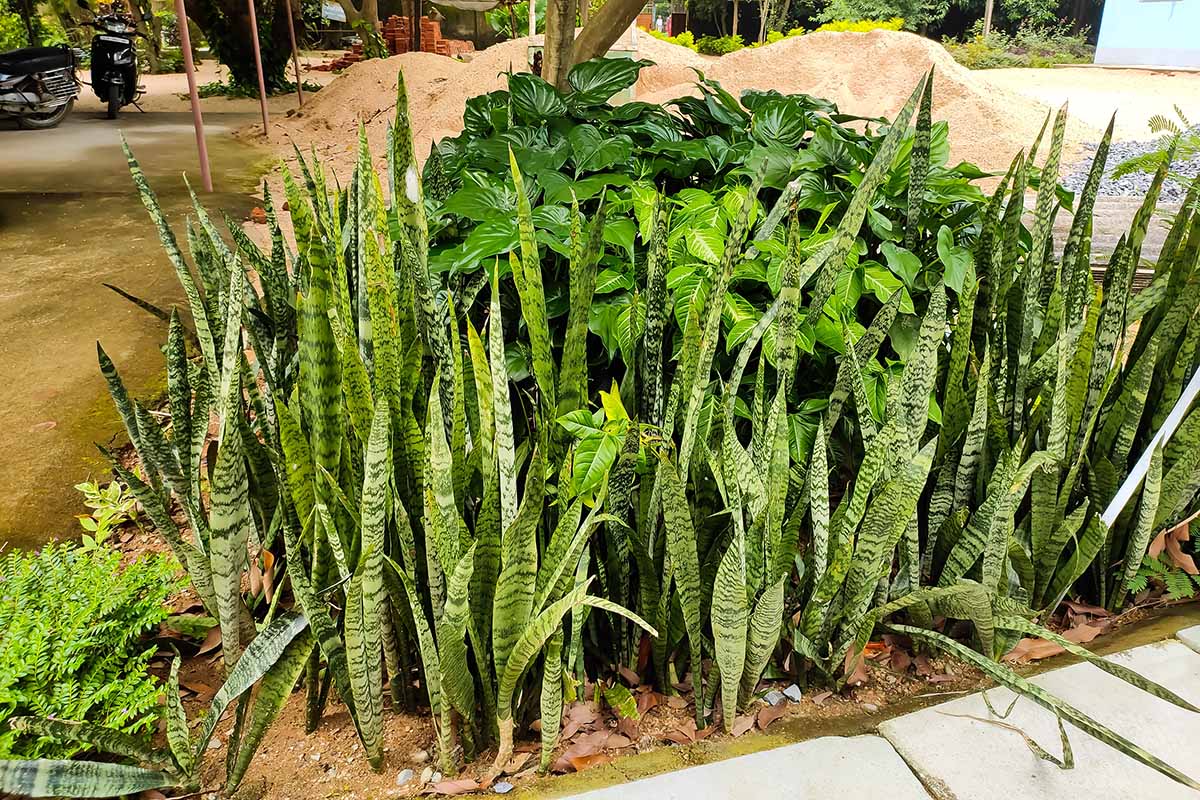
As Samuel L. Jackson’s Neville Flynn might put it: enough is enough! Have you had it with these *expletive* snake plants in your *expletive* garden? Then this guide is certain to come in handy.
Whether you decide to put a barrier between yourself and the snakes, trim any flower stalks prior to fruit production, or pull out your trusty garden weapons and get to digging – shovels are much preferred to sporks here, so there’s a bonus tip for you – the job ahead isn’t overly onerous, and you can get back to enjoying your landscape in no time.
Questions or remarks can go into the comments section below! We’d be delighted to read and respond.
Do you want to learn more about snake plants? We’ve got the fix for you right here:
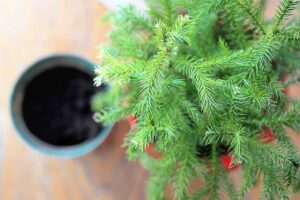


I don’t like this plant, it’s encroaching on a lot of planted land, I’ll clean it up as soon as possible.
Sounds like a plan!
It certainly is, especially at the base of native trees, taking away water, nutrients and space from the native vegetation and no one seems to notice. I have and I have begun to take action.
Kudos to you for taking action ASAP!